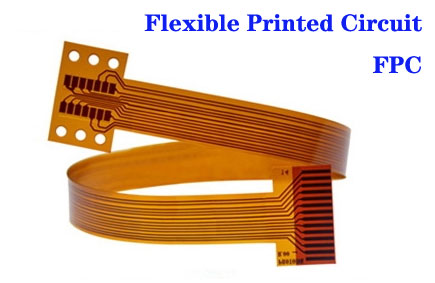We all know that recently, the major brands of folding screen cell phones, flexible wearable electronics and other smart devices are emerging. The "era of flexibility" has come, folding screen is one of the hot spots in the cell phone market in recent years, becoming the consensus of the industry. As an important part of flexible electronic devices, flexible sensors are developing from basic research to industrialization.
Sinocrystal would like to share with you the technical knowledge of the raw material -- FPC, to understand how to manufacture FPC and the combination of hard and soft board, which helps us to design the best matching scheme, or provide more angles of analysis ideas in the later anomaly analysis.

Today we would like to share you of Flexible Printed Circuit materials
1. Substrate and protective layer film
The most common material we use is polyimide (PI), which is so soft and strong that we can't easily tear it or stretch it. It is also incredibly thermally stable and can easily withstand the temperature changes of the reflow process in processing, and we can barely detect its expansion and contraction deformation during the ups and downs of temperature changes.
Polyester (PET) is another commonly used material for flexible circuits, compared with only polyimide (PI) film, which has poorer heat resistance and temperature deformation than PI film. This material is typically used in low-cost electronic devices where printed circuits are wrapped in a flexible film. Since PET cannot withstand high temperatures, let alone solder, the process of cold pressing is generally used to make this flexible circuit board.
I remember that the display part of this clock radio uses this flexible connection circuit, so this radio often does not work properly, and the root cause is this poor quality connection.
So we recommend the flexible and rigid board or choose PI film, other materials are also available but not often used.
PI film, PET film, thin epoxy resin and glass fiber core, are the common materials used for flexible circuits. In addition to that, the circuit needs to use other protective films, usually 23, and sometimes mask solder resist ink is used.
In the same way that a solder layer on a rigid board protects the circuit, the protective film insulates the conductor from the outside world and protects it from corrosion and damage. PI and PET films are available in thicknesses ranging from ⅓ mil to 3 mils, with 1 mil or 2 mil thicknesses being more commonly used.
Glass fiber and epoxy materials are thicker, generally from 2 mils to 4 mils.
2. Conductors
Printed conductors, usually carbon film or silver-based ink, are used in the money-saving electronics mentioned above, but copper conductors are still a common choice.
Depending on the application, we have to choose a different form of copper foil. If the purpose is simply to replace wires and connectors, thus reducing manufacturing time and cost, then electrolytic copper foil, which is well used in stress circuit boards, is the best choice.
3. Adhesives
Often, we need an adhesive to bond the copper foil to the PI film (or other films) because, unlike conventional FR-4 rigid sheets, the surface of the roll-toughened copper foil does not have many burrs, so high temperatures and pressures do not allow for good bonding.
Manufacturers, such as DuPont, offer single- and double-sided, etchable copper-clad laminate films that use an acrylic or epoxy-based adhesive with a thickness of ½ mil or 1 mil, and this adhesive was developed specifically for flexible circuit boards.
"Adhesive-free" laminates are becoming more common due to the introduction of new processes such as coating and depositing copper skins directly on PI films. Such films can be useful in HDI circuits that require finer pitches and smaller vias.
Silicone, hot melt or epoxy resins are used when protective beads are added to the hard and soft bond. This enhances the mechanical strength of the hard and soft bond and ensures that no stress fatigue or tearing occurs during repeated use.
All in One: It is important to have a clear understanding of the materials used in flexible or rigid-flexible circuit boards.
We are free to choose materials according to the application, but this sets up the end product for failure.
Understanding the properties of materials can also help us to design, evaluate and test the mechanical part of the product.
If the product being developed is for an automotive application, heat dissipation, moisture resistance, chemical corrosion, and impact all need to be carefully simulated so that the correct material is used to achieve high product reliability and a minimum allowable bend radius.
The 8 inch displays might be affected and delay for an accident.
New iPhone 13 Series will use On-Cell OLED Displays. And it that will be launched in the second half of this year will be exclusively supplied by Samsung Display (SDC)
This is the project management of how sinocrystal handle your customized project relate to displays.
Discover how LCD displays are evolving in industrial automation — from high-brightness and rugged designs to smart connectivity and energy efficiency. Explore what’s next for industrial-grade visual interfaces.
Discover the key factors to consider when choosing an LCD display for your project, including size, resolution, interface, brightness, and customization options from a factory-direct manufacturer.
Discover the latest innovations in rugged LCD displays for harsh environments — from extreme temperature resistance to sunlight readability and waterproof designs. Factory-direct manufacturing with full customization.
A complete guide to LCD display connection methods, including SPI, I2C, RGB, MIPI, LVDS interfaces and physical mounting options. Learn how to connect monochrome and TFT LCDs to your development board or product housing.